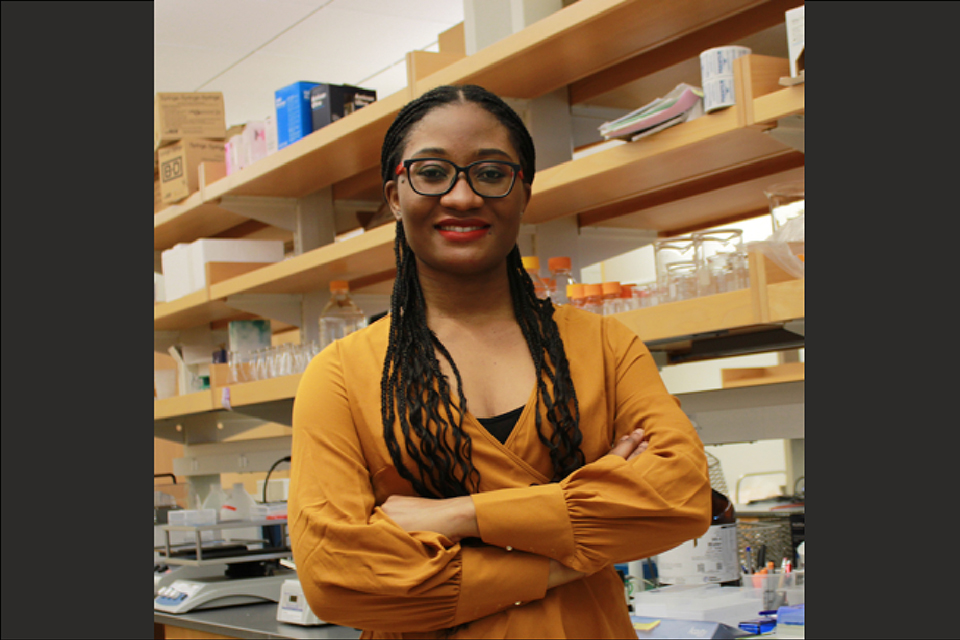Student Spotlight: Juliet Obi
This post originally appeared on the BPS Blog and has been edited for this blog.
The featured student for today’s blog post is Juliet Obi, a PhD student.
What is your current position?
I am a third-year PhD candidate in pharmaceutical sciences at the University of Maryland School of Pharmacy. I work in the lab of Dr. Daniel Deredge. Our lab is focused on the application of mass spectrometry-based biophysical approaches, specifically hydrogen-deuterium exchange, integrated with computational methods for the structural and biophysical characterization of proteins.
Please share a brief description of your research.
My research is focused on gaining insights into the structure and dynamics of the dengue virus nonstructural 5 (NS5) protein. Specifically, my research aims to characterize the structural dynamics of dengue NS5 in its apo form, and in complex with its different RNA partners, to gain mechanistic insights into its catalytic functions.
What are some potential applications of your research?
There are no antiviral drugs approved for the treatment of dengue fever to date, and there is no universal vaccine available to protect people from all the dengue serotypes. One of the potential applications of my research, therefore, is in the use of integrative experimental and computational approaches to inform computer-aided drug design. A combination of experimental-based ensemble refinement approaches and enhanced sampling molecular dynamics (MD) simulations for the exploration of the conformational landscape of NS5 can be applied to computer-aided drug design to reveal new therapeutic strategies for NS5 as a drug target against the dengue virus.
How might your research be relevant to those who are not working in your specific field?
My research goal is to leverage the expanded characterization of the conformational landscape of dengue NS5 using the computer aided drug design strategy I mentioned previously for the identification of cryptic drug binding sites on the protein. I believe the integration of experimental and computational approaches in my research to reveal novel druggable binding sites may be relevant in other fields which aim to characterize molecular targets with a complex and diverse conformational landscape. It may also be relevant for structurally under characterized drug targets in other fields.
What is your favorite thing about biophysics?
My favorite thing about biophysics is the multidisciplinary nature of the field. When I was in high school, physics was one of my favorite science subjects, but I did not imagine at the time that many concepts in physics can be applied to biological processes for answering complex questions. This interface between physics-based methods and biology fueled my interest in doing research in the field of biophysics for my PhD.
What do you like to do outside of work/school?
When I’m not in the lab, I love volunteering and hanging out with friends. I currently volunteer as a mentor for the University of Maryland, Baltimore’s Continuing Umbrella of Research Experiences Scholars’ program, which prepares middle and high school students in Baltimore for careers in research and health care. I also like to get involved in opportunities which promote diversity in STEM. Whenever I have some free time, I go to the gym, hike, and run with my friends. I actually just ran a 5K last week!
Do you have a website where our readers can view your recent research and follow your career? Or want to share your professional social media handles?
I am currently working on my personal blog which will be live soon. I have an Instagram page specially dedicated to communicating the science I do. The handle is @queening_in_science, and you can find the science page on Facebook as well (Queening in Science).

